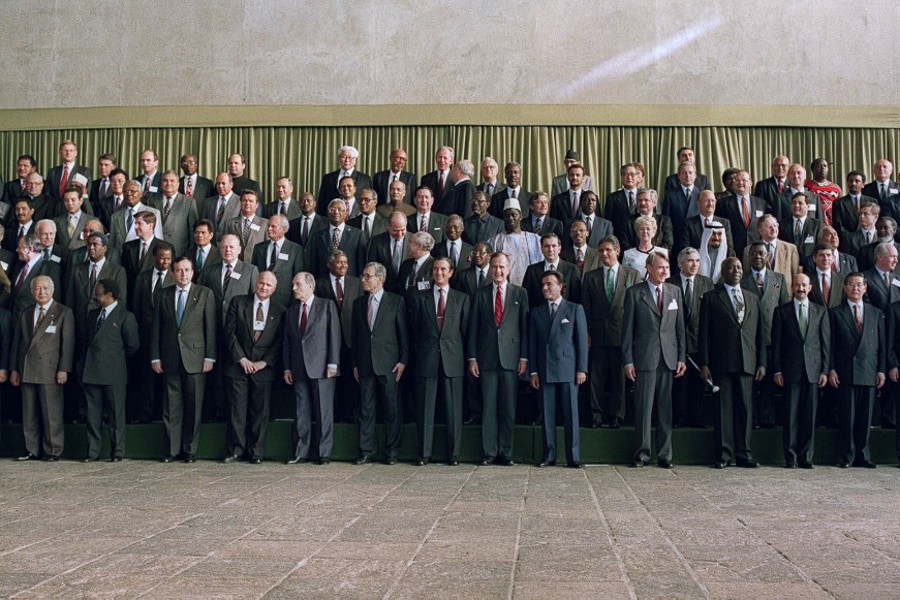
COP26: Everything you need to know about Conference of Parties
When did these world conferences start being held, and what progress have they brought to the world in terms of environmental policies? Here's a lowdown
 The United Nations Conference on Environment and Development (UNCED), also known as the Earth Summit, held in Rio de Janeiro, Brazil in June 1992, was a landmark event in the history of environmental policy around the world, bringing together more than 100 world leaders and over 17,000 environmental activists and campaigners.
The United Nations Conference on Environment and Development (UNCED), also known as the Earth Summit, held in Rio de Janeiro, Brazil in June 1992, was a landmark event in the history of environmental policy around the world, bringing together more than 100 world leaders and over 17,000 environmental activists and campaigners.
Image: Omar Torres / AFP
COP26, a major global event in the climate calendar, is set to open in just a few days. But when did these world conferences start being held, and what progress have they brought to the world in terms of environmental policies?
Since its 21st edition—which concluded with the signing of the famous "Paris Agreement" in 2015—the COP climate conference has become widely known to the public. Now, all eyes are focused on Glasgow, the Scottish city that will host COP26, October 31 to November 12. And it's an event that's all the more anticipated since it was cancelled in 2020 due to the pandemic.
As its name suggests, this is the 26th climate conference since the initiative was started by the United Nations. The history of the COP dates back to 1995, in Berlin, where the United Nations staged, for the first time, what would later become the major meeting for international negotiations on the climate.
But the origins of this international summit date back even further, to 1992, when the United Nations Conference on Environment and Development (UNCED), also known as the "Earth Summit," was held in Rio de Janeiro, Brazil. This UN summit was a landmark event in the history of environmental policy around the world, bringing together more than 100 world leaders and over 17,000 environmental activists and campaigners.







